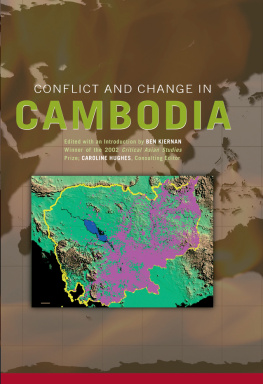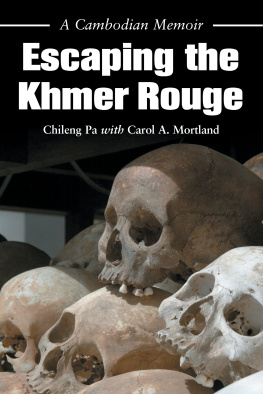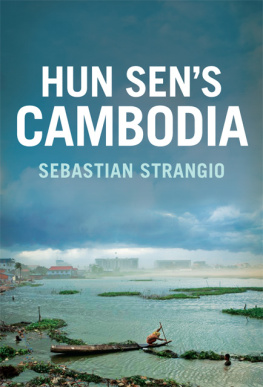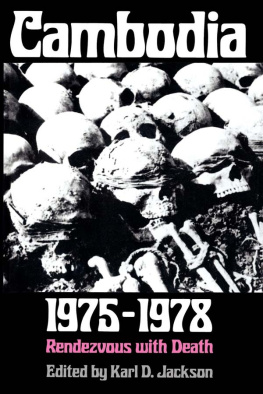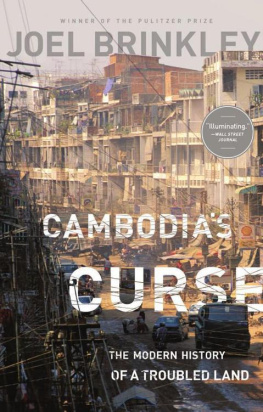Conflict and Change in Cambodia
In the thirty years after the Second World War, Cambodia witnessed the reassertion of colonial power, the spread of nationalism, the birth and growth of a communist party, the achievement of independence, the stifling of reform during a decade of peace, the rise of an armed domestic insurgency, the encroachment of an international war, massive bombardment and civilian casualties, pogroms and ethnic cleansing of religious minorities.
From 1975 to 1979, genocide took another 1.7 million lives. Then, after liberation from the Khmer Rouge regime, Cambodia survived a decade of foreign occupation, international isolation, and guerrilla terror and harassment. UN intervention and democratic transition were followed by Cambodia's defeat of the Khmer Rouge in 1999 amid continuing internal tension and political confrontation.
Against this backdrop of more than sixty years of conflict in Cambodia,Conflict and Change in Cambodia brings together primary documents and secondary analyses that offer fresh and informed insights into Cambodia's political and environmental history.
This book was previously published as a thematic issue ofCritical Asian Studies.
Ben Kiernan, winner of theCritical Asian Studies Prize 2002, is the A. Whitney Griswold Professor of History and Professor of International and Area studies at Yale University. He is the author ofHow Pol Pot Came to Power andThe Pol Pot Regime (both published by Yale University Press) and founding director of the Genocide Studies Program, Yale University.
Caroline Hughes is a lecturer in the Department of Political Science and International Studies at the University of Birmingham in the UK. She is a regional specialist in South East Asia, and the author ofThe Political Economy of Cambodia's Transition 1991-2001 (London: RoutledgeCurzon, 2003). She is currently a visiting fellow at the Universidade Dili, for an ESRC funded research project on The Politics of Community in Post Intervention Societies: Cambodia and East Timor Compared.
Conflict and Change in Cambodia
Edited with an Introduction byBenKiernan
Consulting Editor,CarolineHughes
First published 2007 by Routledge
2 Park Square, Milton Park, Abingdon, Oxon, OX14 4RN
Simultaneously published in the USA and Canada
by Routledge
270 Madison Ave, New York, NY 10016
Routledge is an imprint of the Taylor & Francis Group, an Informa business
2007 BCAS, Inc.
Reprinted 2008
Typeset in Garamond ITC by BCAS, Inc.
All rights reserved. No part of this book may be reprinted or reproduced or utilised in any form or by any electronic, mechanical, or other means, now known or hereafter invented, including photocopying and recording, or in any information storage or retrieval system, without permission in writing from the publishers.
British Library Cataloguing in Publication Data
A catalogue record for this book is available from the British Library
Library of Congress Cataloging in Publication Data
A catalog record for this book has been requested
ISBN 10: 0-415-38592-X
ISBN 13: 978-0-415-38592-3
Contents
Ben Kiernan
Ben Kiernan, introductory note
Paul Marks translator
David Roberts
Caroline Hughes
Philippe Le Billon
Ruth Bottomley
Helen Jarvis
Ben Kiernan
Guide
INTRODUCTION
Conflict in Cambodia, 1945-2006
BEN KIERNAN
EIGHT DIFFERENT REGIMES have governed Cambodia since 1944. Yet, before World War II, Cambodia was a heavily taxed, relatively quiet corner of the French empire. Its population was 80 percent Khmer, 80 percent Buddhist, and 80 percent rice-growing peasants. Up to a fifth of the population were ethnic and religious minorities: Vietnamese, Chinese, and Muslim Chams worked mostly in rubber plantations or as clerks, shopkeepers, and fisherfolk, while a score of small ethnolinguistic groups, such as the Jarai, Tampuan, and Kreung, populated the upland northeast.
After Japans defeat in World War II, the reimposition by force of French colonial control of Indochina provoked armed nationalist resistance by both Viet Minh and Khmer Issarak (independence) forces. Protracted anticolonial conflict in both Vietnam and Cambodia fostered the emergence by 1951 of a Vietnamese-sponsored Cambodian communist movement, the Khmer Peoples Revolutionary Party (KPRP), which won increasing though not unchallenged preeminence among Issarak nationalists contesting French control of their country. Saloth Sar, then a student in Paris calling himself the Original Khmer, returned home in 1953 and briefly served in the communist-led Issarak ranks. He later assumed the nom de guerre Pol Pot.
The First Indochina War culminated in the French defeat by Viet Minh forces at Dien Bien Phu in 1954. Cambodia also obtained independence under the then-king, Norodom Sihanouk, who soon adopted a foreign policy of cold war neutrality. His choice was partly a domestic accommodation, an implicit acknowledgment of the local communists important role in the war for Cambodias independence and their potential and incentive to disrupt a more proWestern regime. Neutrality was also a foreign policy strategy to keep Cambodia out of escalating conflict in neighboring Vietnam. It worked for over a decade. Sihanouks foreign policy of independence appealed to moderate nationalists, and his neutrality appeased veteran communists, while his autocracy stifled dissent and co-opted most of Cambodias political spectrum into a one-party kingdom. Those radicals of left and right dissatisfied with Sihanouks policies had to bide their time, head for the hills, or leave for Vietnam or Thailand. Half of Cambodias veteran communists took up exile in Hanoi. Most remaining grassroots leftists were either mollified by Sihanouks advocacy of peace and neutrality, jailed by his police, or disappeared, like the underground Cambodian communist leader, the former monk Tou Samouth, who was mysteriously killed in 1962. A group of Paris-trained militants headed by Saloth Sar, Ieng Sary, and Son Sen immediately assumed the central leadership of the demobilized KPRP. They quietly slipped away from their teaching jobs in the capital. The partys veteran leadership, largely from rural and Buddhist backgrounds, pro-Vietnamese though relatively moderate, was replaced by younger, urban, French-educated, anti-Vietnamese extremists. From the jungles of the remote northeast, the new party leadership planned an armed rebellion against Sihanouks regime, ignoring his independent nationalism and labeling him a U.S. puppet. Civil war loomed as the regime sensed the threat and moved with renewed vigor against all leftists, driving above-ground moderates into the arms of the younger militants now leading the party. Following them into underground opposition came a new cohort of disgruntled youth who had benefited from Sihanouks rapid post-independence expansion of educational opportunities, but who were unable to secure commensurate employment in a fragile economy that registered real growth only in 1963-65 and remained plagued by corruption.
Once the United States escalated the Vietnam War in 1964-65, Cambodia had little hope of remaining an oasis of peace. Its frontiers became increasingly porous and vulnerable. By 1966, rampant smuggling of Cambodian rice across the border to both sides in the Vietnam conflict bankrupted the Sihanouk regime by depriving it of export duties, the governments main source of revenue. Cambodia was drawn further into the war by waves of ethnic Khmer refugees fleeing Saigons persecution, Vietnamese communists seeking neutral sanctuary, anticommunist troops in hot pursuit, and U.S. Special Forces incursions and jet-fighter raids. Then, in 1969, President Nixon ordered extensive B-52 bombing raids of border areas of Cambodia.

